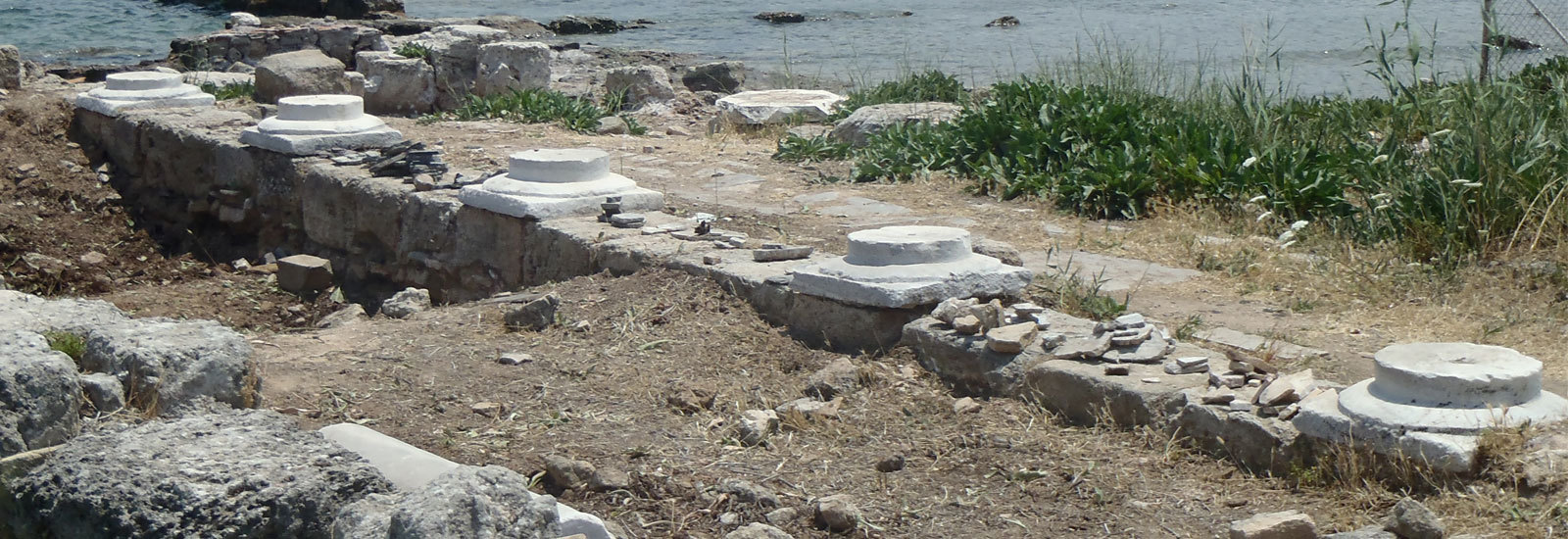If you think archeological work is all kneeling in a trench, brushing ancient dust off potsherds, think again. As Dan Davis, Luther assistant professor of classics, points out, digging up artifacts is only about 10 percent of what an archeologist does. This past summer, students from Luther and other colleges got their hands on the rest of the work during a field school in Greece, learning such skills as archeological drawing, site illustration, architectural and artifact photography, pottery cleaning, and ceramic analysis. Their accumulated work will eventually tell the story of Roman-era Kenchreai, the port of the great city of Corinth on the Aegean City.

Luther partners with Vanderbilt University and the University of Maryland to offer the field school. Vanderbilt’s Joseph Rife directs the Kenchreai Archeology Project under the auspices of the American School of Classical Studies at Athens. This year, Davis acted as assistant director for the program in late May and early June, bringing with him 11 Luther students. Undergrads from Marshall, Swarthmore, Skidmore, Cornell, and other mostly four-year liberal arts colleges made up the balance of the 39 participants.
A small area of Kenchreai was excavated by the Greek Archeology Service in 1976 in preparation for a public works project building a road to connect southern and central Greece. The Greek archeologists rapidly but thoroughly excavated a Roman villa near the sea shore and stored the artifacts, but didn’t have time to do the archeological reporting and publishing that would tell the world what they’d found, Davis says.
So for the past four years, Greece has permitted the U.S. team to work on recording and analyzing the site, allowing students to try out archeological work firsthand. This summer they continued work on the Roman villa. Made up of various rooms surrounding an internal colonnade, the villa’s architecture is monumental, incorporating huge stone blocks and walls in a footprint of about eight thousand square feet.

“We were shocked by the size of this thing when we first started to clear out all the weeds and trees that had been growing over the last 40 years,” Davis says. And each summer, the students’ first task is to again remove the masses of weeds and branches that push up around the stones.
After that stint of manual labor, however, they go into high-tech mode to record the site using theodolites, cameras, and computer software. “This year we incorporated 3-D photography, which was a lot of fun, and a steep learning curve for me,” Davis says. With the new technology, the team is trying to create interactive and very accurate plans of the site.
Luther sophomore Tatiana Proksch admits that she entered the program with the stereotypical image of archeologists digging up artifacts and connecting them to historical events. Part of the reason many of us hold that image is because, traditionally, most students have seen only that part of the process. Davis says that after he joined the Kenchreai project four years ago, “I realized that these students learn more about archeology in those three and a half weeks than most graduate students learn at a typical excavation. Oftentimes a graduate student will be just stuck in a trench—you get to know your square or your room really well—and specialists are called in to take it to the next step.” The students in this project get to try a little of everything.
Sophomore Jacob Domogalla says he was surprised by the comprehensiveness of the field school. “From organizing sherds of pottery by number to utilizing 3-D modeling and pictures, I was impressed to see the amount of work going into each artifact,” he says.
The field school also provided expert speakers. “Bringing in other scholars to lecture offered [students] a chance to see what the careers are in the field of archeology, in case they’re ever interested,” Davis says. Students learned about paleography, the study of letterforms over time, and even ancient magic—how amulets found at the site would have been used. Davis spoke on his specialty, marine archeology. In the next few years the Kenchreai project would like to move underwater in the harbor area by using a suite of sensors and an autonomous underwater vehicle (AUV) to survey the remains of warehouses, temples, and an early Christian church that sank in an earthquake toward the end of the Roman Empire.
Busy days also included field trips to such ruins as late Bronze Age palaces and classical theatres, as well as visits to Athens’ museums. For a little recreation, the Americans played a basketball game against the local town’s team. It’s become an annual tradition, with the mayor announcing the game and doling out prizes afterward. Half the town showed up, Davis says.
Who won? “We got killed,” he says. “But I like to think we had a good showing.” There’s always next year.

